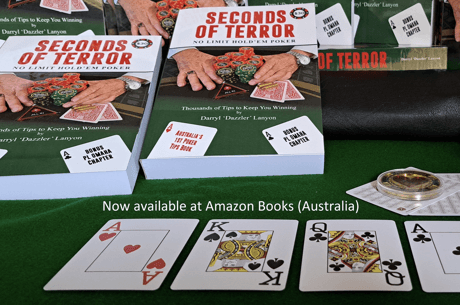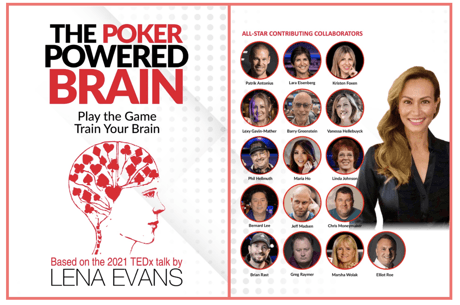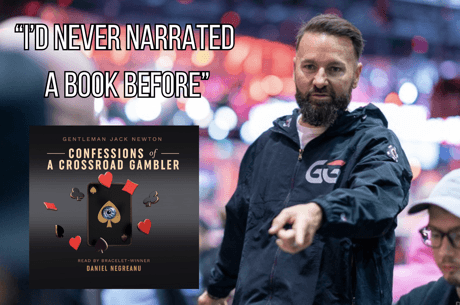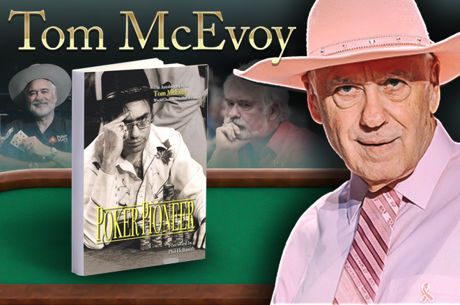PokerNews Book Review: Jonathan Little’s Excelling at No-Limit Hold’em

Following a tradition reaching back to Doyle Brunson’s famed Super/System, Jonathan Little’s Excelling at No-Limit Hold’em compiles contributions from a number of different poker players, coaches, and writers to provide readers a wealth of insight and instruction regarding poker’s most popular variant.
As Little explains in his introduction, he recruited the book’s 17 contributors who along with himself provide a wide array of experience and insight “aimed to help beginning players transform into strong amateurs” as well as “to help strong amateurs become world-class.”
Unlike Super/System which finds various writers each tackling different games, the focus in Little’s book is entirely upon no-limit hold’em, both cash games and tournaments. But the contributions are hardly so uniform, well covering many different topics to prove just how complicated and multi-faceted no-limit hold’em can be.
Following an introduction from Little, our own Chad Holloway kicks off the collection by “Examining the Post-Boom Evolution in Poker,” an interesting discussion of how much hold’em has evolved over the last decade-plus. Holloway considers various outdated adages, changes in game play, and other strategic shifts as evidenced both by his own experience and at the many tournaments from which he’s reported.
From there follows the first large section of chapters on “Poker Strategy,” starting with poker coach Evan Jarvis’s entry describing “The Six Ingredients for a Winning Poker Strategy” derived from the math of the game (equity, position), styles of play (aggression, selection), and mindset and work ethic (attitude, time on task).
Chris Moneymaker’s chapter discussing “Lower Buy-In Tournament Strategies” follows, an especially practical discussion of the types of players and playing styles one encounters in the inexpensive daily tournaments and other low buy-in events in which the great number of poker players participate. Moneymaker provides several immediately useful tips about approaching these events — especially with regard to reading opponents — and punctuates his chapter with some interesting hand analyses illustrating how the same hand can play differently in low versus high buy-in events.
Cash game players will appreciate poker author Ed Miller’s “Seven Steps to Moving Up in Stakes... and Staying There” and its advice to begin by assessing why they are winning at their current level and tips for figuring out how to win after moving up. Scott Clements’s “My Strategy for Success” follows, a wide-ranging discussion on a variety of topics, most of which concern tournament play. Then Matt Affleck continues the discussion of “Tournament Strategies” with a collection of recommendations of his own including how to read opponents, how to overcome “fear of betting” (something he notes affects many amateurs), and how to use a big stack to leverage against shorter-stacked opponents.
Bernard Lee next offers some suggestions for finding “Success in Satellites,” then author Zachary Elwood provides “An Overview of Poker Tells” in which he outlines a theory of tells before discussing a lengthy list of common examples like long looks at hole cards, staring at the board, defensive behaviors, timing tells, and more.
The next section of chapters, collected under the heading “The Technical Game,” presents contributions that delve more heavily into the math of poker, yet are still for the most part as readable as what has gone before.

Poker pro and coach and PokerNews Strategy contributor Alexander “Assassinato” Fitzgerald kicks off the section with some “Range Analysis.” The chapter provides a detailed discussion of how often bets in certain situations need to succeed to be profitable, with lengthy examples frequently incorporating math to help support the decision-making process and the many diagrams from Flopzilla signaling that we’ve moved over to the more “technical” side of the game.
Next comes a chapter co-authored by Phil Hellmuth and Liv Boeree titled “Short Stack Strategies: Old School Versus New School,” with each separately addressing approaches to battling in tournaments with stacks of 20 big blinds, 15 BBs, 10 BBs, and 5 BBs. Representing “new school” thinking, Boeree offers some initial guidelines and Hellmuth responds by agreeing with some and taking issue with others.
The pair then take turns discussing how each would differently play identical hands arising in short-stacked situations, with the give-and-take enlightening and entertaining throughout. For example, after Hellmuth defends a play with reference to his “white magic level reading abilities,” Boeree cheekily responds “Sadly most of us mortals haven’t got the white magic you speak of, Phil,” before crunching some numbers to back up her play with the math.
Two chapters by Jonathan Little follow (the only contributor with more than one chapter in the book), the first discussing “Value Betting Versus Pot Control” and the other “Tackling a Final Table.” The first succinctly carries the reader through the pros and cons of betting or checking medium-to-strong hands while the latter presents an especially clear explanation of the “Independent Chip Model” and its relevance to final table play, with added discussions of deal-making, short-handed play, and heads-up strategy.
Then comes Olivier Busquet’s chapter “Playing Heads-Up” in which the tournament pro talks the reader through 11 different hands as a means to address various concepts, with the sharpness of his explanations reminding us both of his considerable success playing heads-up online as well as his experience as a poker commentator. Finally, Will Tipton provides a tutorial on “Game Theory Optimal Strategies” that serves as a good introduction to GTO play and its relevance both to cash games and tournaments.
The book’s third section includes three contributions focused on “The Mental Game,” starting with PokerNews Strategy contributor and Postive Poker author Dr. Tricia Cardner’s discussion of “Mental Toughness: The Ultimate Psychological Edge.” As Cardner does both in her book and in her articles, she draws upon others’ research into the subject of mental toughness to provide an illuminating definition of the concept from which she derives concrete advice for becoming stronger mentally.
Jared Tendler, author of two books on The Mental Game of Poker, meanwhile tackles how to combat a particular variety of mental weakness often affecting poker players in his chapter, “A Proven Strategy for Eliminating Tilt.” Like Cardner, Tendler both defines his topic (considering “seven types of tilt”) and provides tangible strategies for controlling tilt including ways for dealing with it at the table in “real time.” Elliot Roe then rounds out the section with a discussion of hypnotherapy and its potential applications for poker players looking for a new way to improve their mindset.

Finally an Afterword by Mike Sexton collects some entertaining and edifying anecdotes under the heading of “Great Plays from the Great Players.”
Unlike occasionally is the case with similar compliation-style volumes of poker strategy, none of the contributions to Excelling at No-Limit Hold’em can be considered thin or of limited value when compared to the others. Each provides thorough and thoughtful discussions, and it’s hard to imagine a reader not deriving something of value from every one of them.
For contributors like Miller, Elwood, Little, Tipton, Cardner, and Tendler, Excelling at No-Limit Hold’em provides great introductions to those authors’ own books. And for those represented who haven’t published much in the way of strategy before, the insights suggest deeper reserves of hold’em-related wisdom that could be further mined by each.
I imagine most who pick up a copy will not necessarily read it start-to-finish but pick and choose chapters for which the subject or author is of special interest. I can also see the value of consulting the book prior to playing a tournament or cash session, reading a chapter as a means to review or gain new knowledge before taking a seat.
Little describes Excelling at No-Limit Hold’em as having been inspired by the benefit he has derived from discussing strategy with friends, and indeed the book does function that way for the reader — like getting involved in a long, diverse discussion on hold’em in which numerous experts are coming and going as they share their ideas.
As Scott Clements notes in his chapter, “Regardless of your comfort zone or your results, if you refuse to push your boundaries, you will not progress and grow as a player.” By offering such a variety of quality instruction and insight, Excelling at No-Limit Hold’em gives readers several ways to do just that — namely, to push their boundaries and think further about many different facets of hold’em as a means to improve their games.
Excelling at No-Limit Hold’em is currently available for pre-ordering at the D&B Publishing website and at Amazon. Also, later this year and in 2016 free monthly webinars will be held to give readers a chance to follow-up and interact with the book’s contributors — find out more at the book’s website.
For those at the World Series of Poker, the book will be launched at the Rio All-Suite Hotel and Casino on Saturday, June 13 at 6:00 p.m.
Want to stay atop all the latest in the poker world? If so, make sure to get PokerNews updates on your social media outlets. Follow us on Twitter and find us on both Facebook and Google+!









